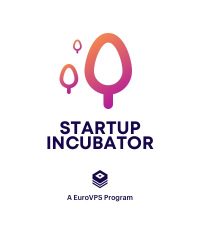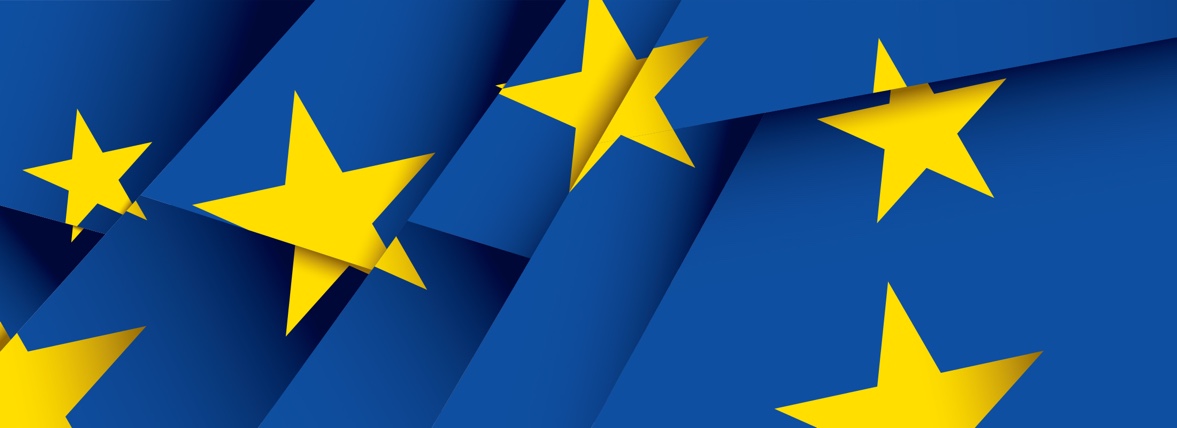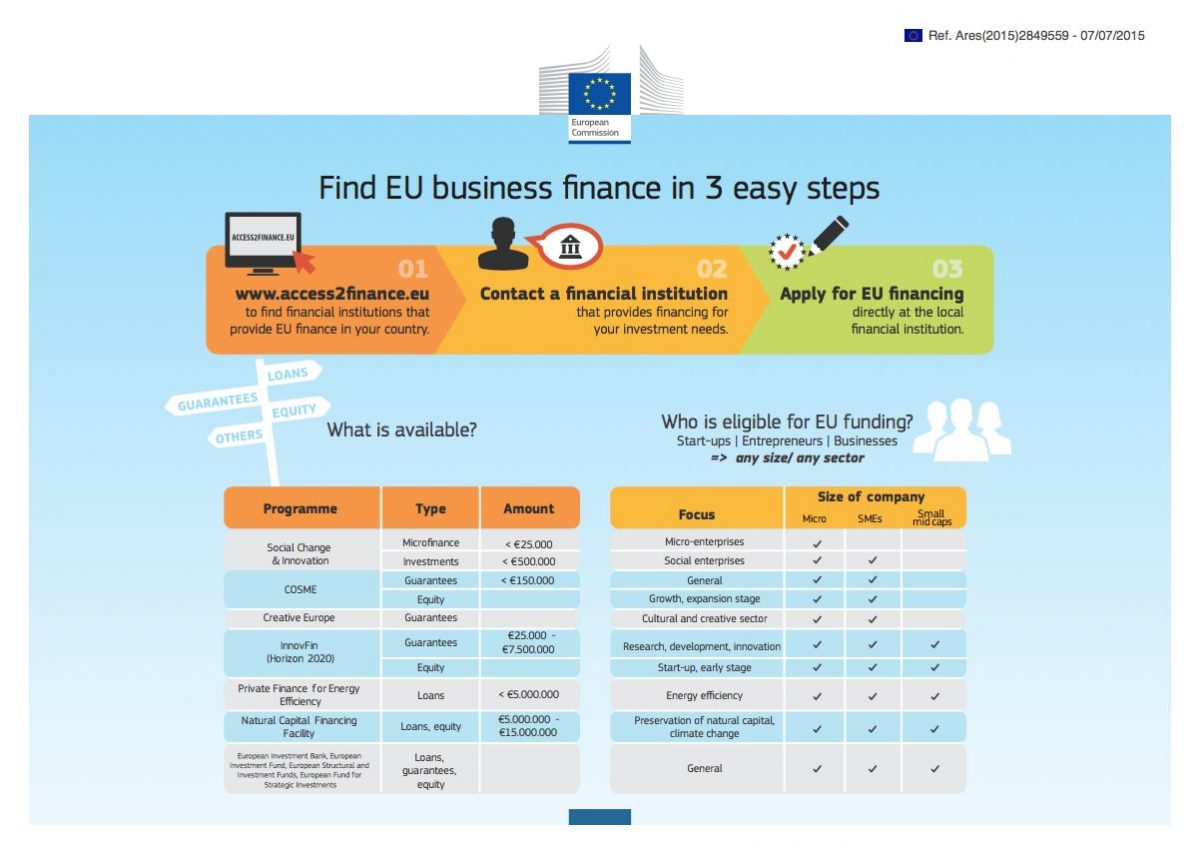If you’re an entrepeneur or an investor who’s interested in startups, you might find that your dreams are bigger than your purse strings.
There’s nothing worse than seeing the opportunity of a lifetime and not being in the right place to take advantage of it. It’s enough to have you Googling “loan sharks near me”.
But borrowing money from a loan shark is a bad idea, which is why founders and entrepreneurs typically turn to incubator programs and angel investors. Angels don’t have big teeth or inspire Steven Spielberg to make horror films.
Unfortunately, trying to get financing from investors can often feel like this:

Luckily, investors aren’t the only route to funding. Instead of going through conventional channels (such as taking out a loan or preparing an awesome pitch to investors for your small business ideas), you can start looking into other options.
If you’re a European startup, for example, then the European Union has programs that support entrepreneurship within the region and your company might be eligible.
EU supports regional businesses and specific projects through a range of initiatives including:
- Grants
- Loans, guarantees and equity
- Subsidies (usually for agriculture and mostly managed by national governments)
- Prizes
A fifth method of support is through direct purchases from SMEs in the region for internal use. These are called public contracts and come into play when local, regional or national governments purchase training programs, catering services, IT support and other goods and services.
But in this article, we’ll be focusing on grants, loans, guarantees and equity, because these are the most relevant choices for entrepreneurs, startups and investors.
Remember that any project/business receiving EU funds is subject to either direct financial oversight by the EU, indirect oversight through partner institutions/national authorities or a combination of both (which is the case around 80% of the time). But as long as everything’s legit and above board, you’ve got nothing to worry about.
Getting Funded Through Grants
Grants are typically awarded to winning proposals after a call for submissions. These submission calls are usually in-line with particular social, economic or infrastructural goals that have been set by the European Union. So if the EU is focusing on promoting renewable energy, it might offer grants to companies that are developing new technologies.
One example of this kind of initiative is the EU’s Horizon 2020 program, which has been running since 2014 and which will release nearly €80 billion of funding by 2020. It’s aimed at securing Europe’s global competitiveness in an ever-changing marketplace and has backing from Europe’s leaders and the Members of the European Parliament.
Grant Proposal Categories:
Calls for proposals typically fall into one or more of the following categories:
- Regional and urban development
- Employment and social inclusion
- Agriculture and rural development
- Maritime and fisheries policies
- Research and innovation
- Humanitarian aid
Click here for a list of the European Union’s open calls for funding applications.
Applying for a Grant:
Every call for grant applications will follow a slightly different process, and specific instructions are usually provided by the organisation in question. Still, while each call has its own quirks and peculiarities, the process as a whole generally looks something like this.
Step 1:
Determine your eligibility based upon the guidelines that are specified in the call. Aside from the particulars of a specific call, a general requirement is that you are an eligible recipient of EU funding. That involves ticking at least one of the following boxes:
- European SMEs or startups
- Non-profits or NGOs
- Youth (aged 13-31)
- Researchers
- Farmers
- Public bodies
Step 2:
Register your organisation with the European Commission.
Step 3:
Find partners or apply as an individual.
Step 4:
Submit your proposal as per the guidelines provided. This will include submitting documentation such as:
- Grant application form
- Legal entity form
- Financial identification form
- Simplified balance sheets for the past two years
- A budget
- Declaration of honour (including exclusion criteria and conflicts of interest)
Step 5:
Wait to hear the results of the proposal. With a bit of luck, it’ll look like this:

Obtaining loans, guarantees and equity
Loans, guarantees and equity usually come in an indirect form and are often provided so that entrepreneurs can seek out financing from other conventional/commercial avenues.The “funding” here usually comes in the form of EU backing which helps business owners to get their applications for credit lines/financing approved.

Capital for your business is also provided in some cases, although access to this kind of financing is usually competitive and closely monitored. The programs supported by these types of funding fall once again into various categories. We’ll be looking at:
- Competitiveness of Enterprises and SMEs (COSME)
- InnovFin (a program aimed at supporting innovation)
- Creative Europe (funding for cultural/creative enterprises)
- Program for Employment and Social Innovation (EaSI)
Competitiveness of Enterprises and SMEs (COSME)
The Competitiveness of Enterprises and SMEs program has been running in its current form since 2014. It aims to increase the quantity and international competitiveness of SMEs in Europe.
It does this in four main ways:
- It facilitates access to finance
- It supports internationalisation and access to a broader marketplace
- It promotes a competitive environment (barriers to entry etc.)
- It supports entrepreneurship and the formation of new businesses
Gaining access to COSME
Financing from loan guarantees
The first way to obtain financing from the COSME program is through financing guarantees (and loan guarantees in particular). The program aims to provide somewhere between €14 billion and €21 billion in funding over the course of its six year lifetime. They’ll offer business loans of up to €150,000 for anywhere between 220,000 and 330,000 SMEs in Europe!
Capital financing through intermediaries
The second way to receive funding is by providing equity capital to investment firms that are investing in SMEs. This program has between €2.4 billion and €4 billion budgeted and aims to support digital entrepreneurship in the EU and to help companies that are currently in the process of scaling their business.
In either case, the process of obtaining financial assistance from COSME begins by searching for institutions that partner with the EU Commission and then applying for EU financing directly through those institutions.
You can find a directory of the financial intermediaries that work with the EU right here. It can be organised both by country and by the amount of finance that they can provide per application.
InnovFin
InnovFin is another program that works alongside the EU’s Horizon 2020 objectives, and its mission is to support research and innovation throughout the region. Most of the financing in this program is handled by the European Investment Bank and comes in several forms.
Examples of InnovFin financing:
- Project loans
- Intermediated loans
- Venture capital
- Venture debt
- Micro-finance
- Equity and fund investment
The program provides guarantees on behalf of micro, small and medium sized businesses ranging from €25,000 up to €7.5 million.
Similarities between COSME and InnovFin
Much like COSME, the InnovFin equity program offers support through equity capital provided to or alongside financial intermediaries investing in SMEs.
The scheme consists of the following equity contribution programs:
- InnovFin TT (Technology Transfer)
- InnovFin BA (Business Angels)
- InnovFin VC (Venture Capital)
- InnovFin FoF (Funds of Funds)
In general, eligibility for InnovFin programs is limited to innovative companies and investment firms. You can find out more about the full range of programs here.

The Executive Agency for SMEs (EASME)
EASME’s SME Instrument is an extension of the InnovFin program which aims to help “high-flying SMEs” to develop “radical market creating innovation to improve productivity and international competitiveness.“ Specifically, it rewards SMEs that have marketable innovations and which are ready to scale
The SME Instrument is deployed in three phases:
Phase 1:
The initial phase includes coaching and mentoring as well as up to €50,000 for Research & Development. Applications are assessed based on four criteria: impact, excellence, quality and efficiency of implementation. Proposals are reviewed remotely and winning proposals will automatically be entered into phase one.
Phase 2:
Phase two is focused on bringing the concept from phase one to market. In addition to continued coaching and support, phase two also includes production financing (typically between €500,000 and €2.5 million). Higher levels of funding can be requested as long as applicants are able to justify the additional funds.
Phase two applications are carried out in two stages. The first stage includes a remote assessment of applications based on qualitative criteria. The second stage involves panel interviews with experts from the technology, finance and business sectors.
Phase 3:
Phase three consists of sustained support through coaching and ongoing mentorship to accelerate the businesses that have made it through phases one and two.
It should be noted that applications to each phase (mainly one and two) have specific cut-off dates. Also, competition for funds is pretty stiff and a decreasing proportion of applicants is selected as they progress from phase to phase. You can learn more about applying for the SME Instrument right here.

Creative Europe
Creative Europe is designed to support SMEs in the creative and cultural sectors. Companies in this sector represent about 4% of the EU’s GDP. However, their risk is difficult to determine because their businesses tend to rely heavily on human capital and on the deployment of both unconventional and intangible assets.
The assistance provided by the Creative Europe initiative helps to protect financial intermediaries from the risk involved in lending to SMEs in the creative and cultural sectors. This protection comes in a loan guarantee format with an initial €121 million budget, which was expanded to €181 million in December 2017.
Up to 70% of an individual facility and up to 25% of an overall portfolio of loans is covered per institution. Loans under the program are earmarked for investments in both tangible and intangible assets. If your business falls under this category of SME, you’ll need to find a “CCS Financial Intermediary” in your area and apply for financing directly through them.
Program for Employment and Social Integration (EaSI)
The program for Employment and Social Innovation is all about supporting people and businesses that would not otherwise have access to employment or financing.
How to get funding through the EaSI
The program provides around €96 million to European micro-lenders through the European Investment Fund (EIF) in the form of the EaSI Guarantee. These intermediaries are then able to provide lending of up to €25,000 to individual companies who would otherwise not qualify for conventional loans.
If you’re a social enterprise, the program can provide funds of up to €500,000 to assist in the growth of your business. As before, though, you need to find a financial intermediary affiliated with the EaSI program and apply through them directly.
Summary:
The infographic below provides a useful overview of the funding options available to businesses in the EU:
Where does that leave your startup?
There are several ways to go about finding funding for your business.
If you’re an investment company, every program provides information on how to become an affiliated financial intermediary.
If you’re an entrepreneur, there are loads of options at your disposal. That’s kind of the point of this article!
If you’ve read this far down, you should have a pretty good idea of what programs are in place. A great place to get started in your search for financing is the EU’s financing portal at www.access2finance.eu.
Now go get yourself funded. We’ll see you picking stocks on the exchange.
Disclaimer: We’ve done our best to make sure that the information contained in this article is as accurate as possible. The goal of this article is to give you an overview of the different types of funding provided by the EU. While we hope and believe that you’ll find it helpful, your primary source of information should always be official EU Commission documentation or the official website(s) that are relevant to your program of choice.





